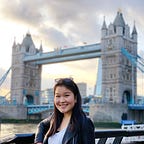CDF Project 2: Form & Composition
Print
2019
Individual Project
About the Project
This project was an exercise in understanding the Gestalt principles. By only using simple black squares to convey five words — order, tension, congestion, playfulness, and comfort — one is able to thoroughly explore how the whole is more interesting than the sum of its individual parts. Squares were allowed to overlap, be different sizes, be at different angles, and bleed (out of the composition borders). Starting with 5 thumbnails for each word and then iterating on both paper and Illustrator, the final product is one composition per word making five total compositions.
Initial Thumbnail Sketches
The first step of this project was completing five thumbnails per word for a total of twenty-five thumbnails.
Before putting pen/marker to paper, I did rough sketches of five preliminary ideas for each word with pencil on printer paper as a sort of brainstorming phase. This process allowed me to test out different ideas and also follow my first intuition for each of the five words.
Final Thumbnail Sketches
After sketching some initial ideas, I did a second iteration in my sketchbook, creating five final sketches for each word. I made sure to fill in the squares used in these thumbnails completely in order to get the full effect.
Digital Iterations
Moving to Illustrator, I decided to pick my two most favorite thumbnails for each word to translate to digital versions. In the first iteration, going left to right, each column is one word: order, tension, congestion, playfulness, and comfort.
In my second iteration, I added onto the original set, playing around with some other ideas I had for playfulness and comfort.
Before my third iteration, I consulted friends to give me some feedback on my compositions so far. I decided to move an artboard from the “playfulness” column to the “congestion” column, edited the other artboard I had in the “congestion” column and added several new ideas to the other columns.
In my fourth iteration, I attempted to narrow down my pieces to just the ones that conveyed the five words the best for me. From here, I once again consulted friends and peers before making my final selections.
Order
My initial ideas for “order” started with squares in rows and columns (in an “orderly fashion” if you will). Squares in neat rows, columns, grids, and in ascending size order illustrated the word “order” to me. I really liked the single column of squares in close proximity down the middle of the composition, so through further refinement and in digital iterations, I played around with the figure/ground relationships by reversing the negative and positive space created by the black squares. This ended up being my favorite piece for “order” made it to my final set of compositions.
Tension
The first things that came to mind when I thought about “tension” was physical tension like the pulling and stretching of fabric and psychological tension like feeling the anticipation and suspense of something about to happen. My initial sketches on paper illustrated physical tension by utilizing proximity between squares to mimic the stretching of fabric or rope and I conveyed suspenseful tension by creating blocks about to fall off a stack or barely being held up by other squares. Iterating on Illustrator led me to find that I could illustrate psychological tension better than physical tension, and thus I ended up selecting the piece with four “blocks” in a wobbly stack with the top “block” about to fall over and off.
Congestion
For “congestion”, the obvious approach is many black squares filling up the page. I attempted to convey congestion with one single square that seems to barely fit in the frame of the composition because it was tilted, but that didn’t convey congestion as well as I wanted it to. From my initial sketches, I actually liked the one with the a single row of skewed squares the most — the idea was that these squares were trying to be stacked but the top and bottom were restraining them and pushing them towards each other in a topsy-turvy way. Since this piece had so much white space, it looked rather sparse and not necessarily congested, so I added squares on either side — first with small squares that hit the “floor” of the frame and then with larger squares that bled out of the frame.
Playfulness
My first instinct for conveying “playfulness” was randomness. The idea of squares of various sizes disorderly strewn across the artboard screamed “playfulness” to me. Another idea I had was when I thought about the squares as children in a line and one child being slightly rebellious and breaking the rules in a cheeky way. This made me create a couple pieces with orderly rows or grids with just one square out of place. However, these never illustrated “playfulness” as much for me as the pieces with random squares and bleeding out of the frame. In the final iteration, I used two overlapping squares to make a rectangle in the center to create even more of an interesting composition.
Comfort
I had a lot of trouble with portraying “comfort” through black squares at first. Everything that brought me comfort seemed to convey “order” more, since perfection and grids or rows really brought me comfort. I tried to play with wavy lines and creating other shapes with the negative space from these black squares. In the end, the simplest pieces brought me the most comfort. I chose a composition with just five squares with the biggest square in the middle and squares that got gradually smaller towards either side. The shape that these squares make together is sort of like a gentle soundwave or a slight inhaled breath. This was extremely peaceful to me and ultimately became my final piece for the word “comfort”.
